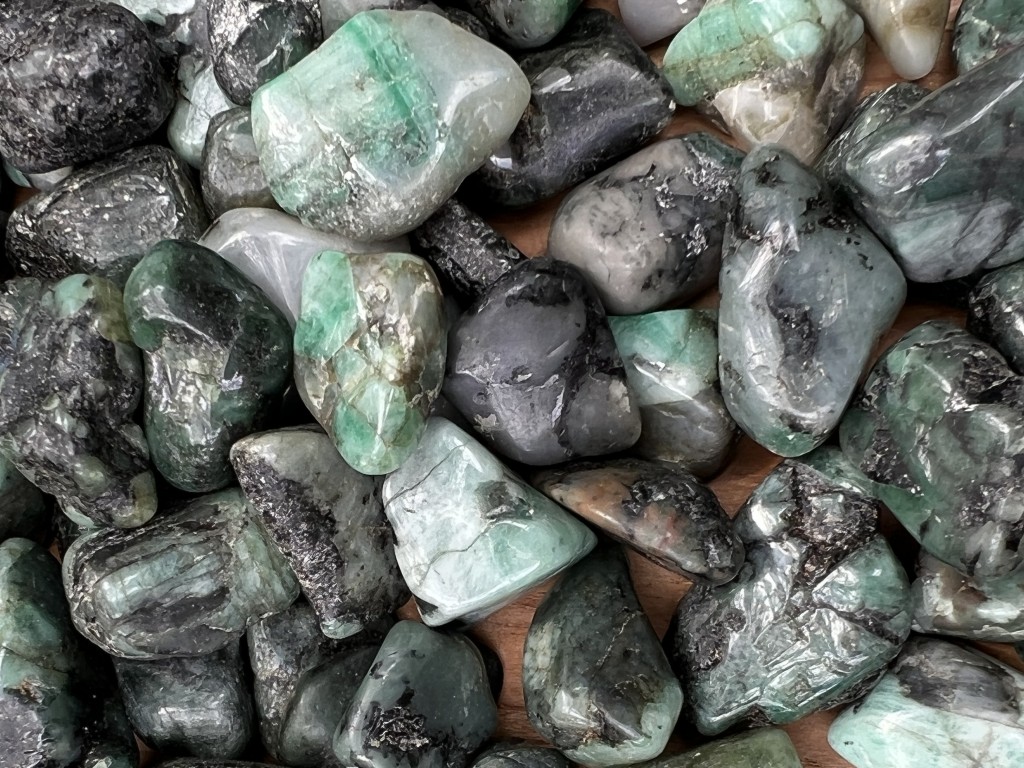
Our Shop
Emerald Tumblestone 20 to 25mm
£1.99
Emerald Tumblestone 20 to 25mm. The listing is for one The name emerald comes from the Sanskrit word “marakata," which means spring green. Many legends and stories surround this magnificent and powerful stone. The Chaldeans, a kingdom of Biblical times, believed emeralds contained Ishtar, their goddess of love and war. In the Middle East, an emerald amulet would often be engraved with a verse from sacred religious texts. Ancient Egyptians believed the green color of emerald represented fertility and rebirth. They would commonly carve emerald scarabs and place them at the heart of a mummy to make the deceased's health flourish in the afterlife. Cleopatra herself was known for her fascination with emeralds. Pale green emeralds were once thought by the Romans to be unripe and as they changed to a darker shade of green, they were maturing in potency. Gazing into the cool green color was reported by Pliny, an author and philosopher of ancient Rome, to ease eyestrain. The Roman emperor Nero Augustus reportedly watched gladiator games through a large emerald gemstone because he found the color to be calming. In some legends, the Holy Grail used by Christ at the last supper was made from a giant emerald. Later, the emerald grail was used to collect his blood dripping from the cross, imbuing the grail with fantastic and holy powers. Emerald is the traditional birthstone for May, but is also associated with the Cancer zodiac. Mystical or Tibetan birthstone charts place emerald as the January stone, Polish and Russian birthstones say emerald is the May stone while according to ancient Hebrew birthstones, the emerald belongs to June. Aside from birthstones, emerald is the 20th and 35th wedding anniversary gift. Emerald Metaphysical Properties This mesmerizing stone's velvety green color is unmistakable. The rich color is renowned as a color of spring and has long been a symbol of romance, hope and rebirth. As the precious gem associated with the goddess Venus, emerald is also commonly believed to aid in fertility. Throughout history, emeralds have often been associated with various goddesses of love and beauty, such as Venus. Emeralds were commonly believed to protect lovers from unfaithfulness. If the heart remained loyal, the gem would glow a beautiful green color, but it was thought that if a lover's heart went astray, the green color would lose its luster and rich color. There were times in medieval history when emeralds were given to spouses because wearing an emerald was believed to enable the wearer to control their passion and lust. In addition, it was believed that wearing an emerald would improve memory and increase intuitive intelligence, enabling you to think clearly about the past, present and future. Emeralds are believed to be encouraging, calming and balancing because of their color. They are also thought to promote creativity and restore optimistic hope in dreams and visions. They are thought to bring good fortune and are often seen in the cash boxes of business owners who seek to prosper in their endeavors. Emerald Geological Properties Emerald gemstones are a variety of beryl, which is the same mineral grouping as aquamarine. Genuine emeralds may include inclusions--referred to as "jardin," a French word that means garden--which can cloud the stone. These inclusions are not considered flaws and indicate an emerald is genuine, not created in a lab. It is common to coat emeralds with clear oil, paraffin wax or clear resin to diminish the appearance of surface inclusions and deepen the green color. Emeralds range in color from light to dark green. The shade of green is determined by the presence of chromium oxide and vanadium. Emeralds can be found all over the world, including countries in South America, Africa, the Middle East and Russia.
